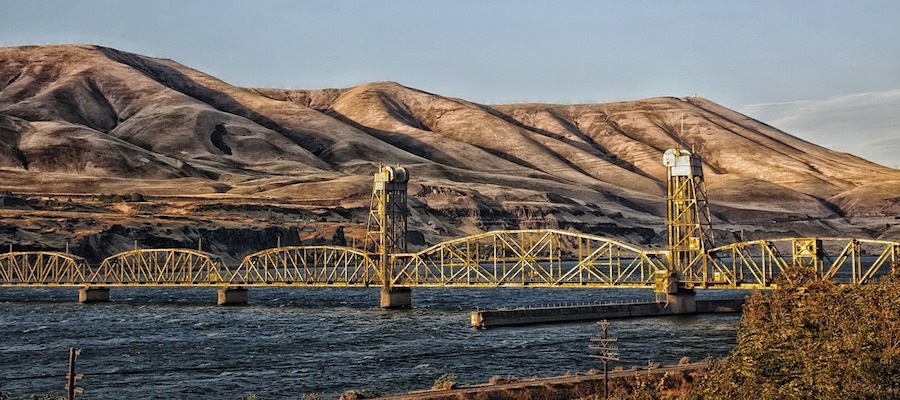T’Sou-ke First Nation: Building a network of clean energy systems

A First Nation cannot survive without a healthy environment. If we take care of the environment, the environment will take care of us. Offsetting fossil fuels or the destruction of [the] planet in any way is something that all First Nations can grasp because we have a deep connection to the land, the animals, and the air. (Chief Gordon Planes, interview by author, August 19, 2015)
In the last 10 years, there has been growing interest among Aboriginal communities in British Columbia to build clean energy projects for reasons such as securing the energy future of the community in the face of climate change, mitigating greenhouse gas (GHG) emissions, engaging in Aboriginal business and economic development, and local community development. To this end, governments, utility companies and technology providers have started to lend their support.
As Aboriginal clean energy projects are still a new phenomenon, comprehensive analysis of their ability to meet community interests and the factors determining success is expanding but still limited. In my recent paper, I undertake a case study analysis of a clean energy project installed in 2009 by the T’Sou-ke First Nation, a small, grid-connected community located on two Reserves around the Sooke basin in the southern tip of Vancouver Island.
The T’Sou-ke First Nation’s clean energy project has three related components: solar photovoltaic (PV) systems with a total capacity of 75.6 kW on Reserve 1, 40 solar hot water systems in member residences on Reserve 1 and 2, and an energy conservation program on both Reserves. Three of the PV systems are grid-tied and installed on two independent structures and the Band’s Administration building while one system simulates off-grid and is installed on the Band’s Fisheries building. In terms of solar PV installation, the T’Sou-ke solar project is considered to be the second largest solar project in BC. The largest was installed by the lower Nicola Band near Merritt in August 2016.
Solar and other clean energy projects have the potential to reduce and possibly eliminate dependence on diesel and other fossil fuels.
The paper uses a mixed-methods approach guided by an analytical framework designed by Sheeran et al., involving qualitative and quantitative data analysis to understand the evolution of the T’Sou-ke solar project, analyze the various impacts of it on the community, and assess its replicability in other BC communities. In addition, the paper outlines the lessons that will guide future community solar and other clean energy projects. Data was collected in summer 2015 from unpublished reports of the T’Sou-ke First Nation and from semi-structured interviews with nine members of the community and three external participants, two of whom worked on the solar project in research and administrative roles and a third participant was a clean energy expert based in BC.
The implications of this case study are beneficial to other grid-connected communities, especially off-grid and remote Aboriginal communities with similar demography and climatic conditions as the T’Sou-ke First Nation. Most off-grid communities rely on diesel generators for electricity and heating fuel (mostly propane) for heat, which are expensive and environmentally harmful. Solar and other clean energy projects, however, have the potential to reduce and possibly eliminate dependence on diesel and other fossil fuels and their resultant impacts.
The case study analysis of the T’Sou-ke solar project finds:
- The solar project evolved from pursuing Comprehensive Community Planning (CCP) by the community in 2007-08. The CCP is a broad planning tool devised by Indigenous and Northern Affairs Canada in partnership with BC First Nations to support First Nations to develop and implement their own community plans. The Band successfully secured $25,000 funding from the BC Capacity Initiative, which is funded by Indigenous and Northern Affairs Canada to carry out the planning process. The CCP process helped the band form a community vision with four key goals (energy autonomy, food self-sufficiency, cultural renaissance, and economic development) and nine other goals. The Band aimed to achieve these goals through various projects and activities in subsequent years. Energy autonomy was the goal behind the solar project, inspired by the fact that T’Sou-ke Reserve 1 receives greater solar insolation. Some of the challenges in project planning and implementation included procuring and managing various funding sources, getting the solar PV systems to work post-installation, and repairing broken hot water systems.
- The main impacts of the solar project on the community were limited energy autonomy, a small net reduction in GHG emissions, short to medium term employment benefits and skills training, and local community benefits and economic development.
- The community’s energy use was reduced by 24 per cent (20 per cent from the energy conservation program and four per cent from solar hot water systems because only 20 of the hot water systems are currently functional). The Band also has two net-zero cost buildings and back-up power for emergency use because of the solar PV systems. The two office buildings are powered 77 per cent by the PV and the rest by grid electricity, mainly during winter months. While the Band is not completely energy autonomous, it has achieved a degree of energy autonomy even though it is grid-connected.
- The net reduction in GHG emissions (lifecycle GHG emissions included) from the solar project is approximately 4.61 tonnes CO2e per year, which suggests a small direct benefit in switching from BC Hydro power to solar. The net GHG emissions reduction is the difference in the combined reduction in the emissions from the solar hot water systems (0.21 tonnes CO2e per year) and the energy conservation program (4.87 tonnes CO2e per year) minus the emissions’ increase from solar PV systems (385.26 kgCO2e per year). However, given the marginal increase in GHG emissions from the PV systems there isn’t a significant effect in decision-making. The direct benefit of replacing diesel with solar power for the off-grid simulating PV system, on the other hand, is comparatively higher (e.g., 7.7 tonnes CO2e per year). So, for a diesel-dependent off-grid Aboriginal community, the reduction in GHG emissions from a solar project will be much higher compared to a grid-tied community like the T’Sou-ke First Nation.
- The solar project provided full-time employment to 15 Band members for three months to a year, which was about 10 per cent of the working-age population and 75 per cent of the unemployed workforce at the time. Among the 15 members, 11 including one woman, were trained and later employed as PV and hot water installers at $15 per hour for three months on the Reserve. Most of these employed members came from the struggling forestry and fishery sectors. The rest of the Band members (three youths and an elder) were employed for a year in the energy conservation program. After the completion of the T’Sou-ke solar project, nine Band members became Canadian Solar Industries Association certified solar installers. And, three years after the project, four certified members were employed as hot water installers in the Solar Colwood Program as a result of a partnership between the T’Sou-ke First Nation and the neighbouring City of Colwood.
- Benefits of the solar project include facilitating solar PV tours and energy conservation workshops for other First Nation communities, municipalities, colleges and other institutions; actively participating in establishing the District of Sooke Climate Change Action Committee; becoming a CCP mentor to over 20 First Nations; and finally engaging in economic development through several business partnerships in energy storage and micro-grid potential, commercial greenhouses, wasabi plantation and oyster farming.
- The replicability of the T’Sou-ke solar project, particularly for grid-tied PV systems, remains difficult for communities without funding. The T’Sou-ke solar project was largely funded through government and private sources (80 per cent of funding was received for the three grid-tied PV systems and full funding was received for the solar hot water systems and the energy conservation program). Without any external funding, the current estimated cost to install a solar PV in BC ranges from $3 per watt to $6 per watt. To be cost-competitive with grid power, residential and commercial solar power must cost about $2 per watt or less. In BC, grid-tied solar PV faces other hurdles such as competition from cheaper “green” sources, such as hydro and wind, and fewer incentives from the provincial and federal governments. However, with the fall in PV prices and cumulative rise in BC Hydro electricity rates, grid-tied solar PV could become financially feasible in the future. Currently, among the PV systems, only the off-grid system has comparative financial and environmental advantages although initial costs and solar optimization are still issues. The solar hot water systems and energy conservation program, on the other hand, cost less and are more likely to be replicable.
The T’Sou-ke solar project provides some important lessons in clean energy project planning and implementation.
The T’Sou-ke solar project provides some important lessons in clean energy project planning and implementation for a successful clean energy community project. Six recommendations can guide other Aboriginal communities planning to invest in solar and other clean energy projects.
T’Sou-ke First Nation Chief Gordon Planes says: “Don’t create the wheels. Look at the successes and tribulations that we went through to get our project off the ground. We will be more than happy to share that with anyone. Also, it’s important to make sure that the project is a good fit for the community. For us, it wasn’t about the monetary value. It wasn’t about creating wealth through making a whole bunch of money in a neck-deep perspective. What we did was something that will be a foundation for us going forward. I think for other First Nations it’s about finding that foundation and for us we found ours.”
- Recommendation 1: Complete the CCP and establish a strong community vision. Factors essential for the CCP to succeed include managing funding from government and private sources, increasing community participation by providing members with meals, honoraria and field trips, and training members to facilitate planning and visioning sessions by hiring a CCP mentor.
- Recommendation 2: Draft a community energy plan and evaluate the full suite of energy options. A community energy plan can identify how to use existing energy more wisely (e.g., through energy conservation measures) and how to create new energy (by installing clean energy systems) in a more responsible way.
- Recommendation 3: Conduct project pre-feasibility studies and evaluate the financial viability of selling surplus electricity. Bands can sell surplus power to utility or energy providers through net-metering or the standing offer program, designed particularly for grid-tied PV systems.
- Recommendation 4: Identify potential business partnerships. Business partnerships can reduce project costs for the community and provide a Band with various kinds of expertise.
- Recommendation 5: Train members and build internal capacity. Communities can partner with technology companies to train members in installation and maintenance of the project.
- Recommendation 6: Share knowledge with other communities. Knowledge gained in planning and implementing a clean energy project can be shared through organizing clean energy forums, participating in community meetings and conferences, and hosting project tours.
Topics: Climate change & energy policy, Environment, resources & sustainability, First Nations & Indigenous


